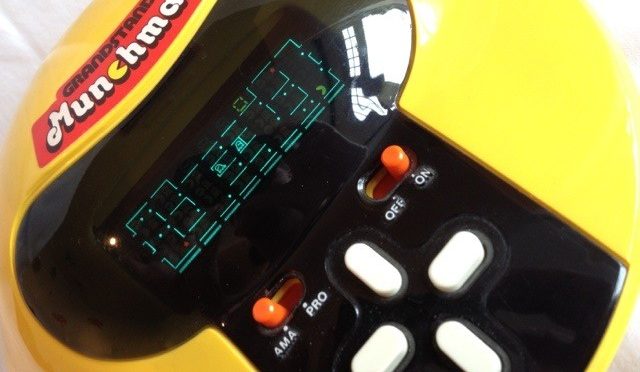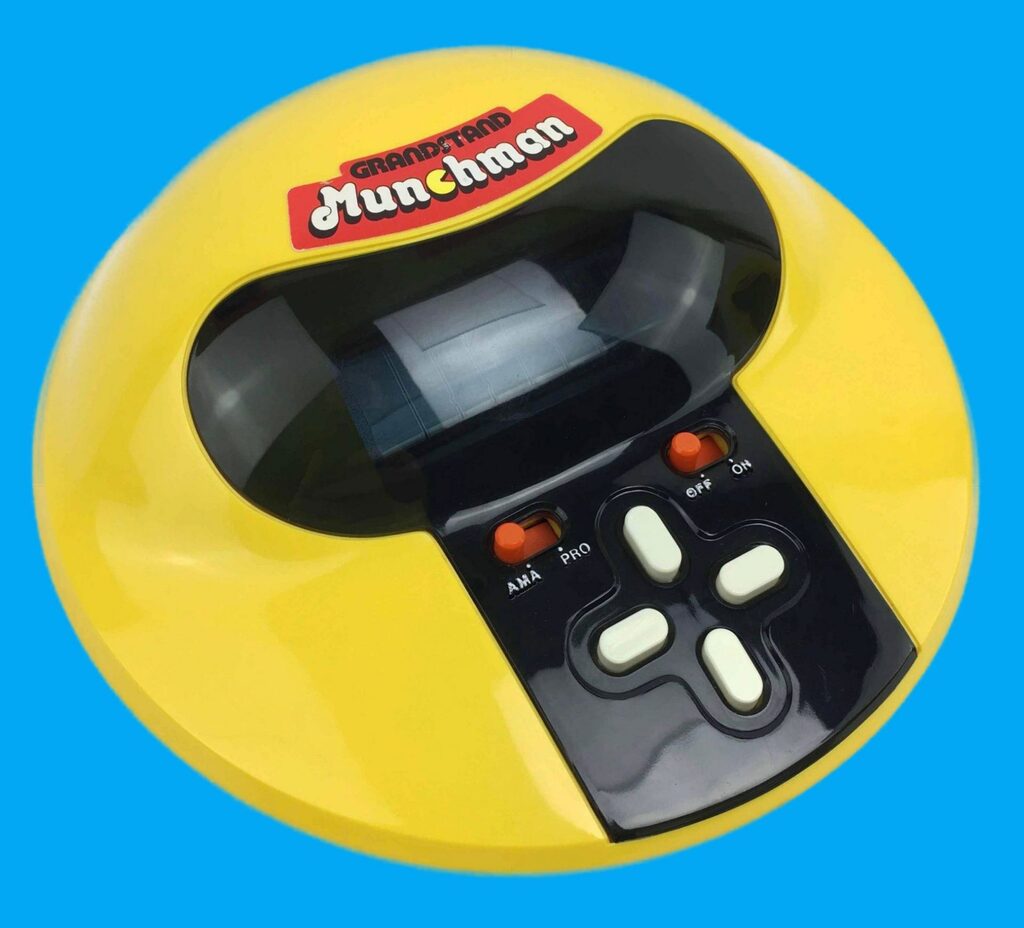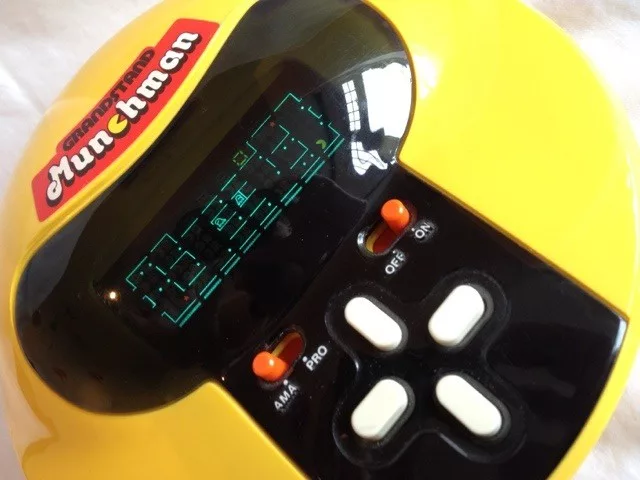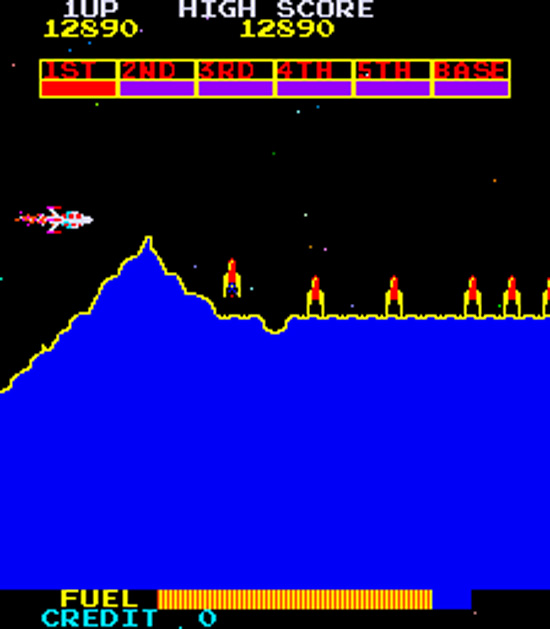The best 80’s handheld game?
On the last day of term at my primary school we would all bring in toys, which back in the early 80’s would include games like Operation and Buckaroo, which still exist relatively unchanged 20+ years later. There would also be the kid who had the really cool toy of the moment, and one of those was Grandstand’s Astro Wars.
Anyone around in the 80’s with any interest in gaming will have come across the Astro Wars handheld, but do they know how the multi-colour display was achieved? Or that Grandstand never actually manufactured the games?

Origin of Astro Wars
Astro Wars was created in 1981 by Japanese games manufacturer Epoch, and licenced to Grandstand for distribution to the UK and European markets. Grandstand was known in the UK for its early “Pong” based TV consoles, also imported from Japan, and had previously released the popular “Invader from Space” handheld game. Grandstand went on to release a number of popular handhelds, including Tomy’s PacMan clone Munchman, and Epoch’s Scramble.
Epoch’s version of the game was released as Galaxy II in Japan, and was virtually unchanged by Grandstand apart from the branding around the magnified game screen.

Hardware Technology
Grandstand’s previous Epoch game “Invader from Space” used a Vacuum Florescent Display (VFD), originally developed for pocket calculators. The original VFD calculator displays showed glowing green on black shapes in fixed locations which could be turned on or off to show different numbers. With “Invader from Space”, as well as showing numbers for the score, the display could also show 3 columns of aliens and bullets, and 3 player ships at the bottom of the screen. By switching the aliens, bullets and player ship on and off, basic movement could be simulated on the screen.

Grandstand took the basic format of Invader from Space and ramped it up to 10 with Astro Wars, with its multi-coloured VFD display, 5 column play area and unique magnified “Fresnel” lens. The multi-coloured display was actually only 2 colours (green and red), with the other colours being achieved with the use of coloured film, similar to that used on early Space Invade arcade monitors.
Astro Wars Gameplay
Astro Wars followed the “Galaxian” arcade gameplay format, with aliens diving from fixed formations at the top of the screen, and the player at the bottom of the screen firing upwards. The five column format, colour display and Fresnel lens presented a much more arcade-like gameplay over the previous Invader from Space.

The action was also suitably turbo-charged, with the speed and volume of enemies on screen increasing to a frenetic level, putting the maximum score of 9999 well out of reach of all but the most dedicated players.
There were 4 distinct phases to the game, and 5 lives with which to complete them, with slight variations in the gameplay:
- Phase 1 – Enemy ships loiter at the top of the screen before dive bombing in a zig-zag pattern down the screen. Destroy 10 to progress.
- Phase 2 – Solitary enemy ships attack in a looping pattern. Destroy 10 to progress.
- Phase 3 – The enemy “command ships” at the top of the screen are now vulnerable, and will shoot a barrage of missiles. Destroy all three for a “GOOd” message and progress to the final phase
- Phase 4 – control a falling space shuttle with the joystick to meet with the moving base at the bottom of the screen, using fire to abort and retry. This was an idea borrowed from the 1980 arcade game Moon Cresta which also featured a docking level.
On completing the 4 phases, the game looped back to the start, repeating until the top score of 9999 is reached. The game also featured 4 difficulty levels available via the “Select” button, combining single or double attacking aliens with slow or fast attack speeds, providing at least some variability in the challenge.
Astro Wars Variants
There are 4 variants of Astro Wars available, all virtually identical apart from the font and wording on the screen:
- Galaxy II – the original game launched in Japan with Epoch branding
- Super Galaxian – also by Epoch, with the game being marketed in Japan as Super Galaxian, but showing “Astro Wars” on the screen.
- Astro Wars – the Uk version with white lettering and Grandstand branding. This is the most readily available version for European gamers.
- Astro Wars (Red Font) – another UK version, with the title in large red letters and an extra pinstripe around the screen lens. There are some references online to this being the “launch” edition.
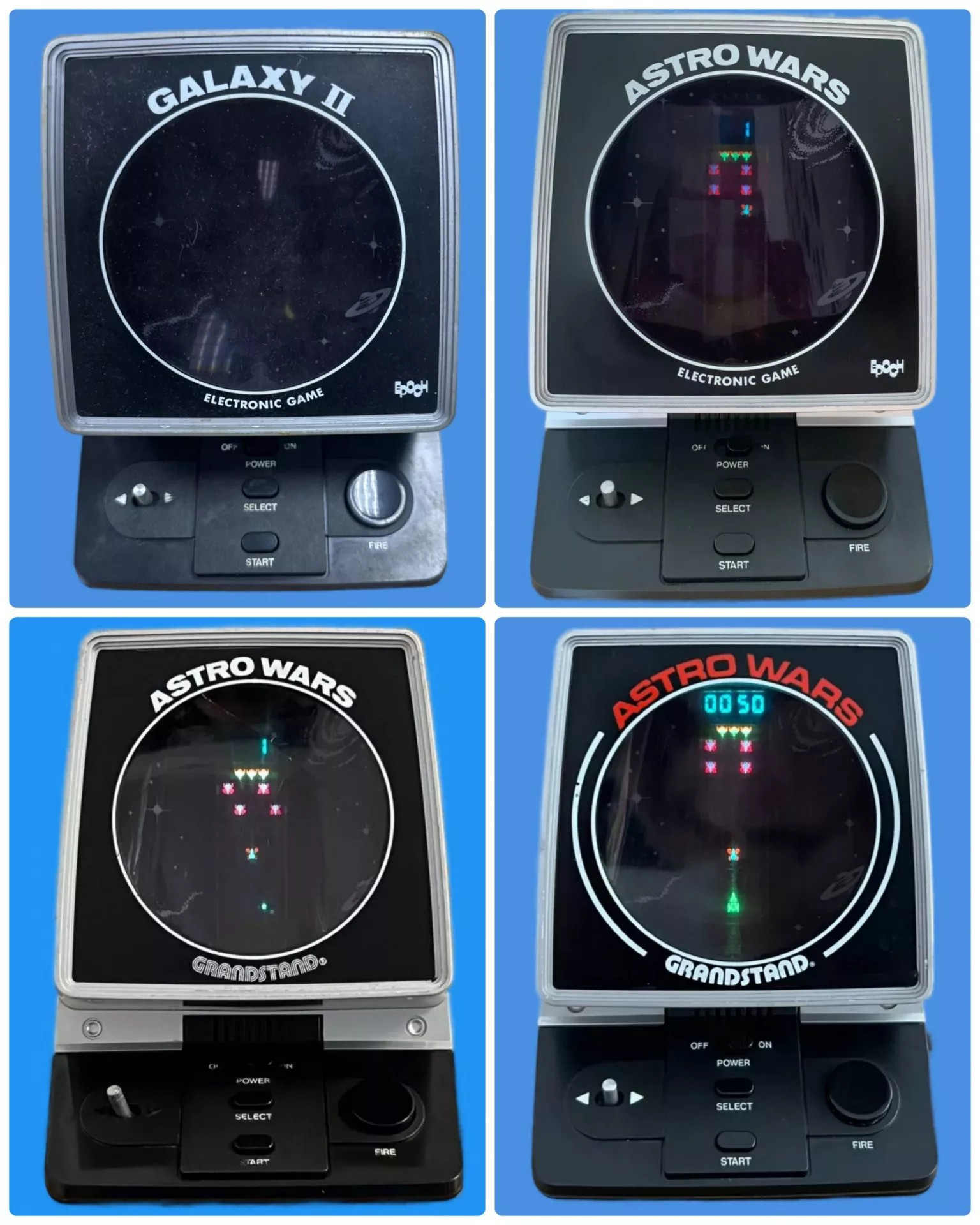
Finding an Astro Wars Handheld Today
I’ve become a big collector of Grandstand handhelds and own examples of most of the games released in my collection. Due to their robust design and huge number sold, you can still find good examples on ebay today
The games are built from study plastics but they suffered from being left in the loft with batteries in. This corroded the terminals, dropping acid onto the circuit board. The VFD display could also fade and die, which is pretty much game over as they cannot be replaced. The PCB was very simple, but did have a couple of weak points. The NPN power transistor (D882) can fail, and also Zener diode (S06) can fail, either of which will leave you with a dead game. Fortunately they can both be replaced by anyone handy with a soldering iron.
The only moving parts are the joystick, start, select and fire buttons and on-off switch, which can all benefit from cleaning the contacts and sometimes lubricating with WD40.
The games also benefit from robust packaging, protected by polystyrene inserts within a cardboard box. Due to the cost of these games they tended to be well looked after and many games for sale will include the original packaging, albeit with 40 plus years of wear and tear.

Was the Astro Wars game any good?
Compared to the handhelds of today such as the Nintendo Switch or any of the many retro gaming handhelds currently for sale, Astro Wars was slightly less than portable due to its shape and size. It was heavy too given it was powered by 4 “D” batteries, so this is probably better described as a tabletop rather than a true handheld. As with all of these early units, the play was fairly repetitive, given that it was hard wired in both hardware and software terms to support only one game with 2 basic levels.
But at the time in 1981, before availability of home computers such as the ZX Spectrum and the BBC Micro, these VFD handhelds were the closest thing to an arcade game experience available for a budget, at £30. For comparison, the Atari VCS / 2600 was £199 at launch in 1977, down to £99 by 1980, with each game around £30.
The advent of home computers such as the ZX Spectrum, with games retailing at £5-£10, spelled the end for these dedicated handhelds. They are however still beautiful as well as functional objects in their own right and should be celebrated at such. With its unique design, Astro Wars will be remembered as one of the best.

